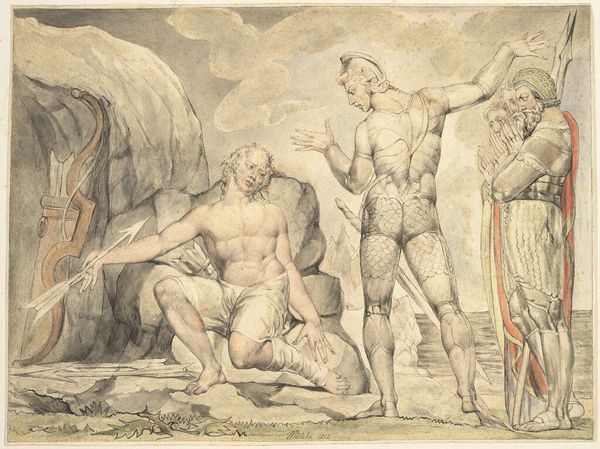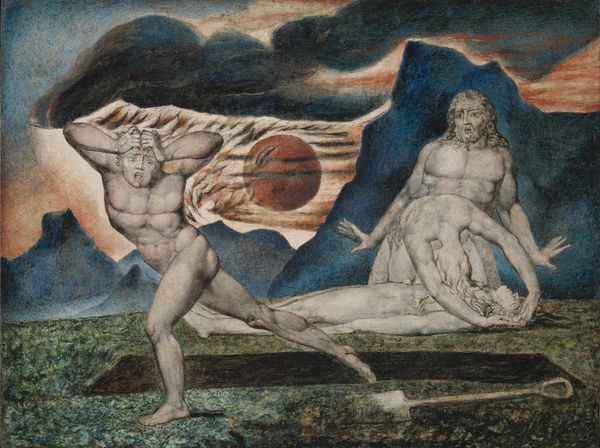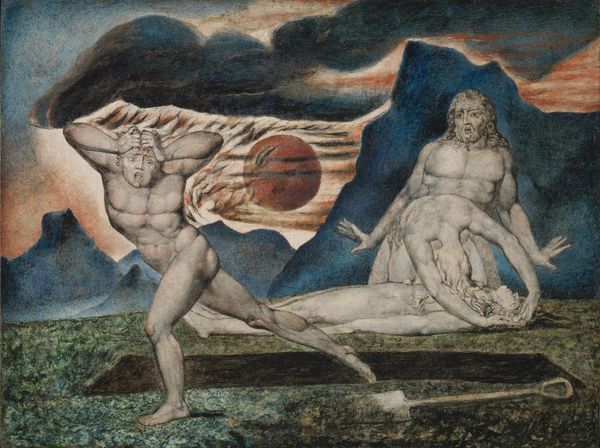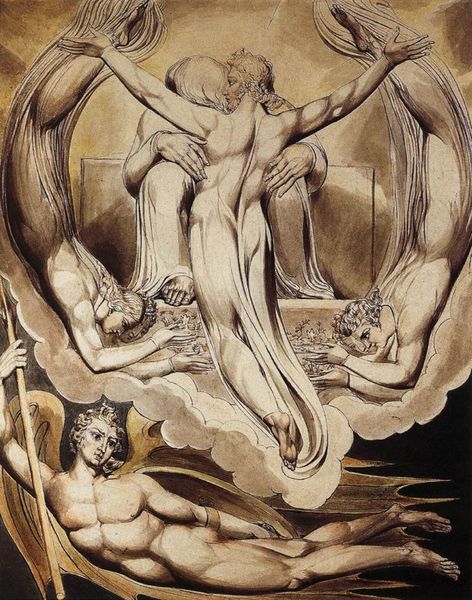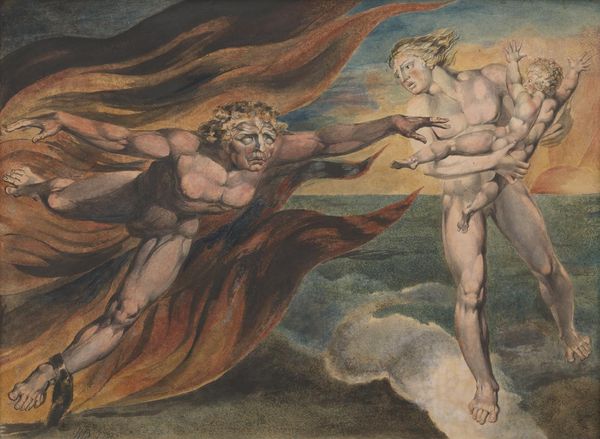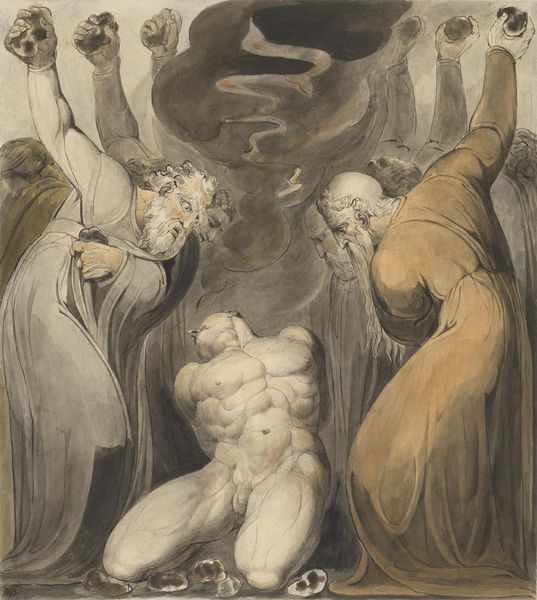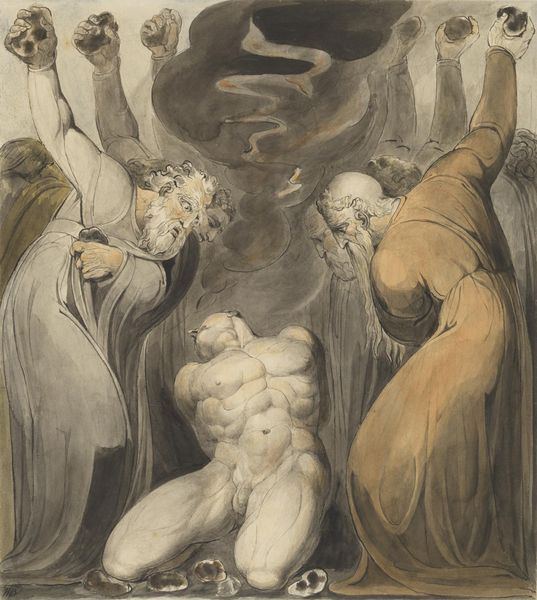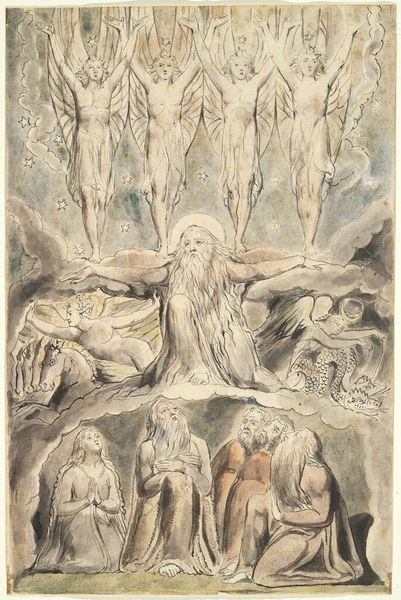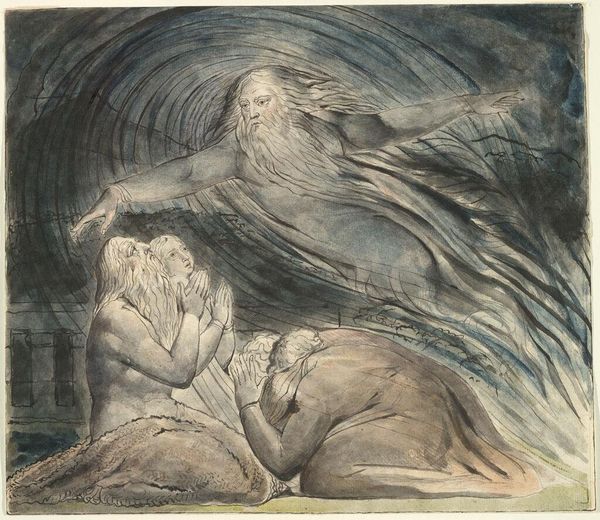
Dimensions: support: 485 x 610 mm
Copyright: NaN
Curator: William Blake’s watercolor, "The House of Death," currently in the Tate Collections, presents a scene imbued with sorrow and finality. Editor: It’s stark. The figures seem suspended in a pale, ethereal realm, a definite break from earthly vibrancy. Curator: Absolutely. Note the dominating, almost oppressive, figure looming above the bodies. Blake often used such figures to represent abstract ideas, in this case perhaps a grim reaper or a deity presiding over death. Editor: The bodies themselves are arranged almost like a classical lamentation scene, but drained of color. Do you think this aesthetic choice was a reflection of the cultural attitudes toward mortality at the time? Curator: Undoubtedly. Death was a constant presence in the 18th and early 19th centuries. Blake’s work often reflected anxieties about mortality and the afterlife, but his artistic vision also gave a voice to those societal anxieties. Editor: So, in a way, Blake used the visual language of death to confront the viewer with their own mortality? Curator: Precisely. His visual language is very heavy with the weight of what's to come. Editor: It's an intimate and chilling portrayal of a universal experience.
Comments
tate 8 months ago
⋮
http://www.tate.org.uk/art/artworks/blake-the-house-of-death-n05060
Join the conversation
Join millions of artists and users on Artera today and experience the ultimate creative platform.
tate 8 months ago
⋮
The English poet John Milton, who died in 1674, was viewed by Blake as England's greatest poet, worthy of emulation but by no means above criticism. It was inevitable that in the large colour prints, his most important printing project, Blake would include Miltonic subjects.This print illustrates lines from Book XI of Milton's poem Paradise Lost. The Archangel Michael shows Adam the misery that will be inflicted on Man now he has eaten the Forbidden Fruit. In a vision of 'Death's 'grim Cave' Adam sees a 'monstrous crew' of men afflicted by 'Diseases dire'. Gallery label, August 2004
